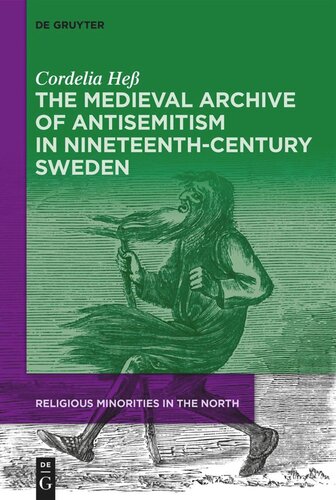

Most ebook files are in PDF format, so you can easily read them using various software such as Foxit Reader or directly on the Google Chrome browser.
Some ebook files are released by publishers in other formats such as .awz, .mobi, .epub, .fb2, etc. You may need to install specific software to read these formats on mobile/PC, such as Calibre.
Please read the tutorial at this link: https://ebookbell.com/faq
We offer FREE conversion to the popular formats you request; however, this may take some time. Therefore, right after payment, please email us, and we will try to provide the service as quickly as possible.
For some exceptional file formats or broken links (if any), please refrain from opening any disputes. Instead, email us first, and we will try to assist within a maximum of 6 hours.
EbookBell Team

4.1
80 reviewsOpen Access
The significance of religion for the development of modern racist antisemitism is a much debated topic in the study of Jewish-Christian relations. This book, the first study on antisemitism in nineteenth-century Sweden, provides new insights into the debate from the specific case of a country in which religious homogeneity was the considered ideal long into the modern era.
Between 1800 and 1900, approximately 150 books and pamphlets were printed in Sweden on the subject of Judaism and Jews. About one third comprised of translations mostly from German, but to a lesser extent also from French and English. Two thirds were Swedish originals, covering all genres and topics, but with a majority on religious topics: conversion, supersessionism, and accusations of deicide and bloodlust. The latter stem from the vastly popular medieval legends of Ahasverus, Pilate, and Judas which were printed in only slightly adapted forms and accompanied by medieval texts connecting these apocryphal figures to contemporary Jews, ascribing them a physical, essential, and biological coherence and continuity – a specific Jewish temporality shaped in medieval passion piety, which remained functional and intelligible in the modern period.
Relying on medieval models and their combination of religious and racist imagery, nineteenth-century debates were informed by a comprehensive and mostly negative "knowledge" about Jews.